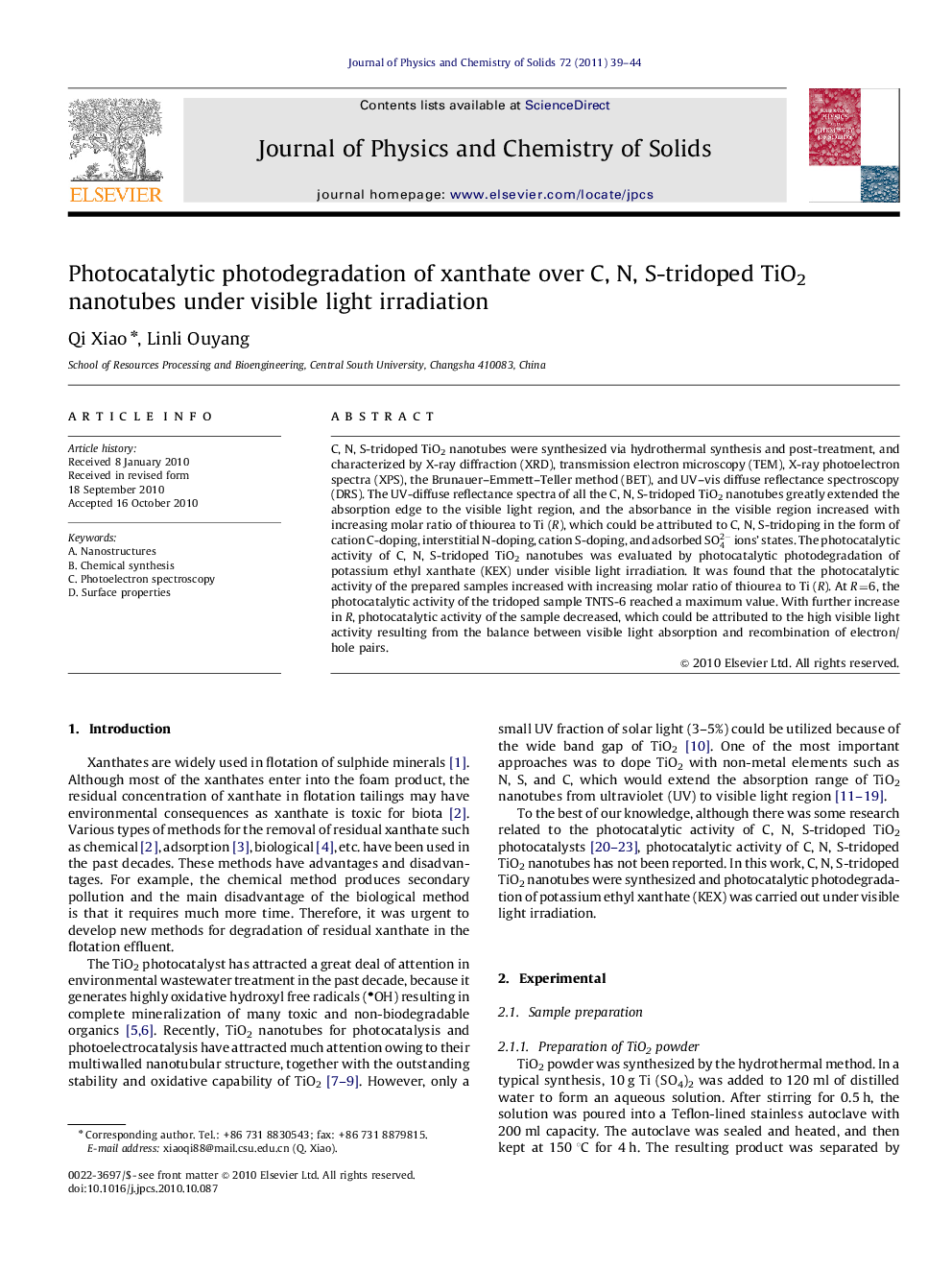| Article ID | Journal | Published Year | Pages | File Type |
|---|---|---|---|---|
| 1516682 | Journal of Physics and Chemistry of Solids | 2011 | 6 Pages |
Abstract
C, N, S-tridoped TiO2 nanotubes were synthesized via hydrothermal synthesis and post-treatment, and characterized by X-ray diffraction (XRD), transmission electron microscopy (TEM), X-ray photoelectron spectra (XPS), the Brunauer-Emmett-Teller method (BET), and UV-vis diffuse reflectance spectroscopy (DRS). The UV-diffuse reflectance spectra of all the C, N, S-tridoped TiO2 nanotubes greatly extended the absorption edge to the visible light region, and the absorbance in the visible region increased with increasing molar ratio of thiourea to Ti (R), which could be attributed to C, N, S-tridoping in the form of cation C-doping, interstitial N-doping, cation S-doping, and adsorbed SO42â ions' states. The photocatalytic activity of C, N, S-tridoped TiO2 nanotubes was evaluated by photocatalytic photodegradation of potassium ethyl xanthate (KEX) under visible light irradiation. It was found that the photocatalytic activity of the prepared samples increased with increasing molar ratio of thiourea to Ti (R). At R=6, the photocatalytic activity of the tridoped sample TNTS-6 reached a maximum value. With further increase in R, photocatalytic activity of the sample decreased, which could be attributed to the high visible light activity resulting from the balance between visible light absorption and recombination of electron/hole pairs.
Related Topics
Physical Sciences and Engineering
Materials Science
Electronic, Optical and Magnetic Materials
Authors
Qi Xiao, Linli Ouyang,
